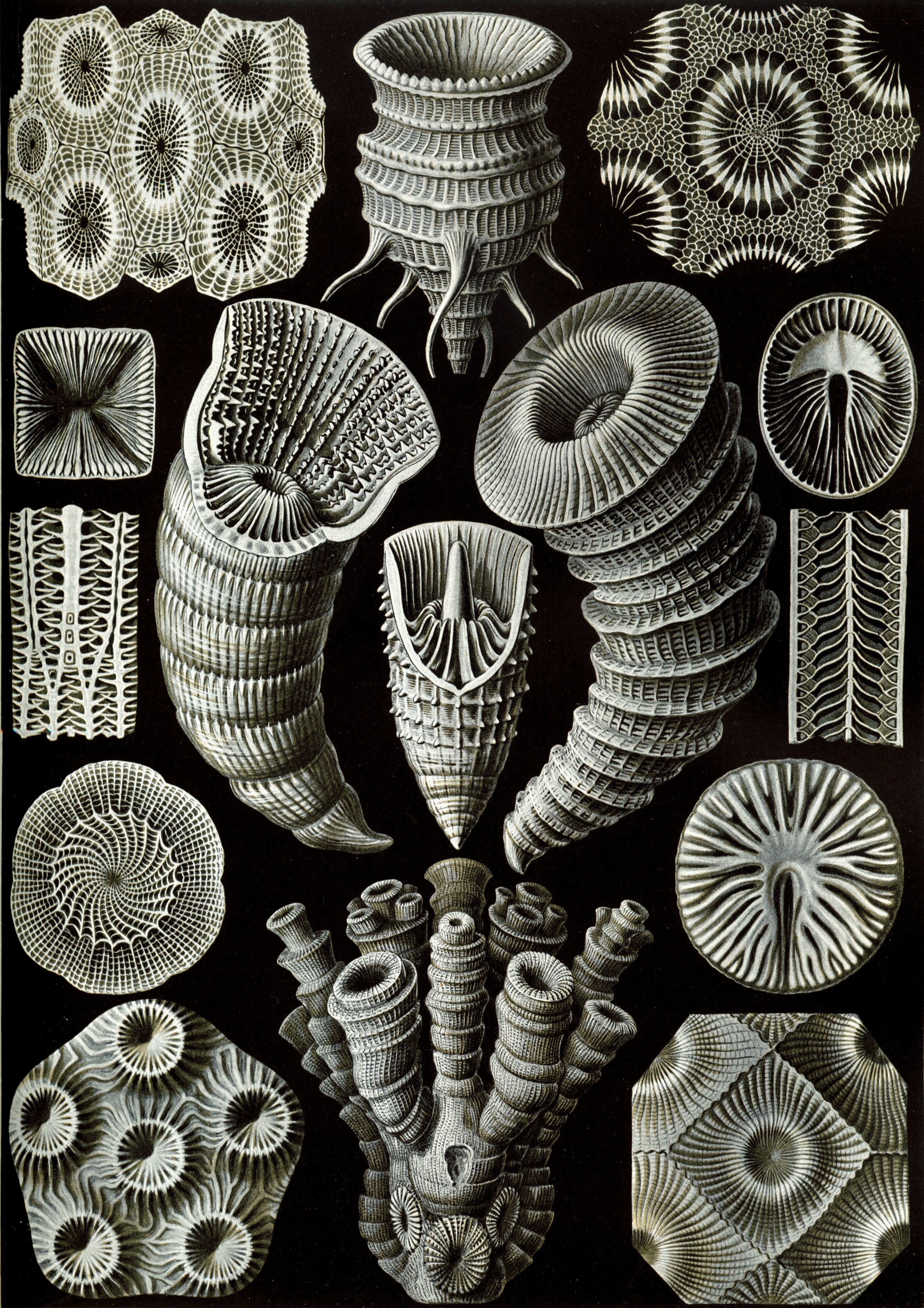- Rugosa
:"The
Rugosa Rose is also sometimes just called "Rugosa"Taxobox
fossil_range = fossil range|488|251.4Ordovician –Permian

image_caption = "Tetracoralla" fromErnst Haeckel 's "Kunstformen der Natur ", 1904
regnum =Animal ia
phylum =Cnidaria
classis = Anthozoa
subclassis =Zoantharia
ordo = Rugosa
subdivision_ranks = Suborders
subdivision =Columnariina †Cystiphyllina †Streptelasmatina †The Rugosa, also called the Tetracoralla, are an extinct order of
coral that were abundant in MiddleOrdovician to LatePermian seas.Solitary rugosans (e.g., "
Caninia ", "Lophophyllidium ", "Neozaphrentis ", "Streptelasma ") are often referred to as horn corals because of a unique horn-shaped chamber with a wrinkled, or , wall. Some solitary rugosans reached nearly a meter in length. However, some species of rugose corals could form large colonies (e.g., "Lithostrotion "). When radiating septa were present, they were usually in multiples of four.Rugose corals have a skeleton made of
calcite that is often fossilized. Like modern corals (Scleractinia ), rugose corals were invariablybenthic , living on the sea floor or in a reef-framework. Although there is no direct proof, it is inferred that thesePalaeozoic corals possessed stinging cells to capture prey. They also had tentacles to help them catch prey. Technically they were carnivores, but prey-size was so small they are often referred to as microcarnivores.External links
*Color reconstruction of the Devonian coral Heliophyllum halli at [http://www.emilydamstra.com/portfolio2.php?illid=142 www.emilydamstra.com]
Wikimedia Foundation. 2010.
